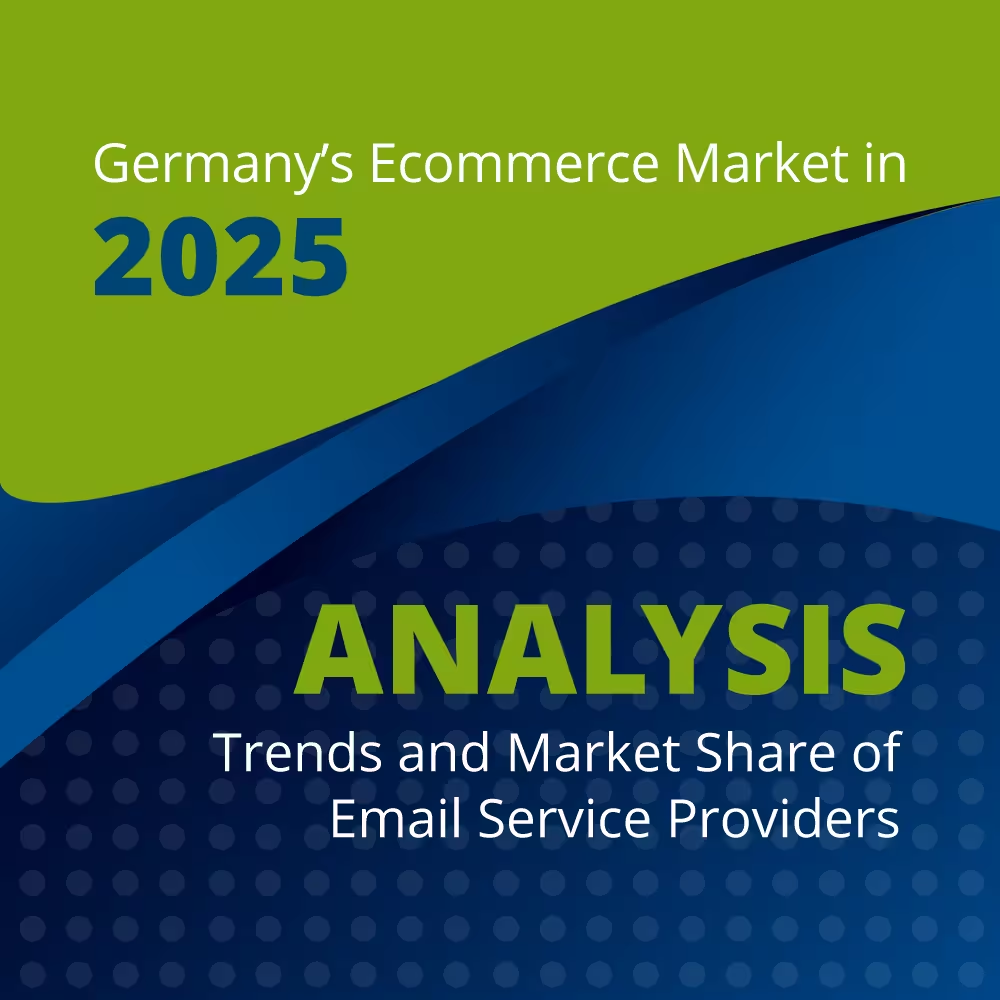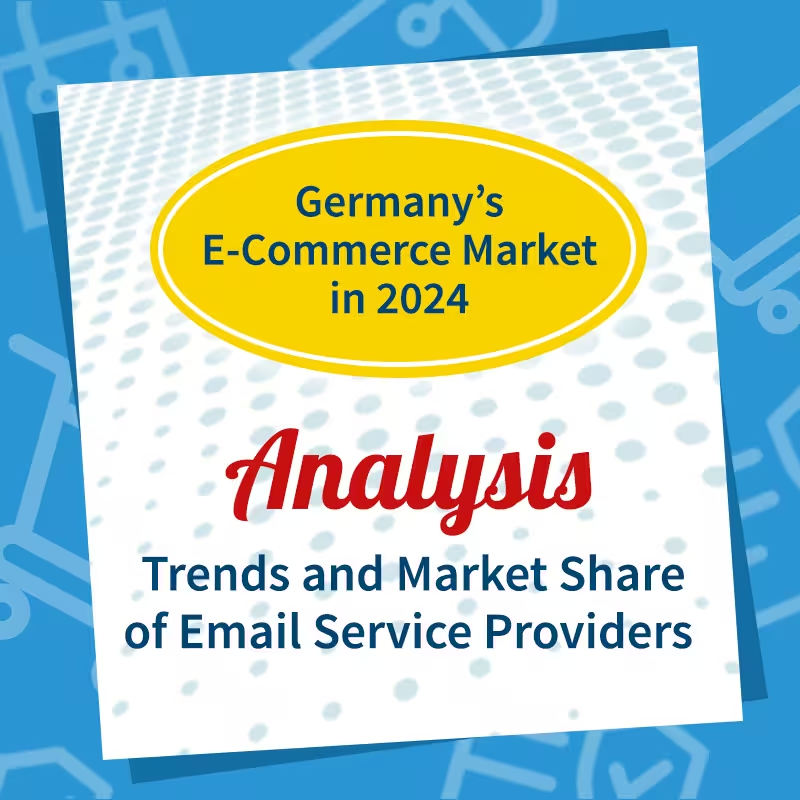Revolution in the mailbox: Gmail replaces GMX and Web.de
The digital world is constantly changing — trends come and go, whether in devices, apps, messenger services or social networks. But up to now, we've been able to rely on one constant: the email addresses of Germans. Our analysis of addresses that German consumers use for online shopping, carried out every two to three years, actually revealed a clear picture: Germans remain surprisingly loyal to their email providers (see our 2022 email study). Once again this year, the well-known email providers are at the forefront of our analysis. But there is a small revolution this year — a change that has been slowly announced since 2014, but is now becoming clearly visible...

Gmail overtakes GMX, Web.de, t-online and co.
Google now has a firm grip on the German market for email accounts and is leaving the competition behind. With a market share of 35.7% in 2024, Gmail knocked the long-standing leader United Internet — which includes the brands GMX and Web.de — off the throne.
The continuous growth of Gmail can be attributed primarily to the widespread use of the Android operating system, which requires a Google account — and therefore often also a Gmail address. Since Gmail is almost ad-free and free of charge, it only seems logical for many users to use this email address not only in everyday life, but also for online shopping and newsletter subscriptions.
80% of Germans rely on the top 5 freemail address services
The five largest email services in Germany dominate the market and account for an impressive 80%. Microsoft addresses (such as Outlook, Hotmail, and Live.com) account for 7.6% of the market. The share of t-online mailboxes remains at a consistently low level of 4.8%, while the use of Yahoo and AOL has been declining for years. Freenet is also losing customers (2024:1.7%; 2022:2.1%) and Vodafone addresses are only used by 0.9% of German consumers in e-commerce (2022:1.5%). Apple's iCloud email addresses, on the other hand, were able to almost double their share and are now used by 3.1% of consumers for online shopping (2022:1.7%). Is this (similar to Gmail + Android) due to the convenient automatic integration of iCloud mail into the Apple Mail app and with connected Apple devices? In any case, Germans like it uncomplicated and if the smartphone is the device primarily used to read emails, it makes sense to use the “included” address of the operating system.
The email inbox landscape is astonishingly fragmented, as it's easy to create your own, individual email address. In our latest study, we evaluated over 40 million email addresses spread across an impressive 1.2 million different domains. Particularly noticeable: Around 990,000 of these domains only appear once. At the same time, 3.7 million addresses — that is 9.2% — cannot be attributed to any of the major email providers.
As in previous studies, it is surprising how rarely the so-called fun domains are used (only 0.09%). Even disposable or trash email addresses are not a big phenomenon when it comes to online shopping: Only 0.04% of email addresses fall into this category. This could indicate that consumers fear missing out on important transactional emails and therefore prefer to provide “real” email addresses. In addition, many online shops will filter out corresponding trash mail domains as soon as email addresses are entered.
conclusion
Google and, with restrictions, Apple are slowly but surely pushing other Freemail providers out of the market. For experts in email marketing, this development has clear implications: Google's overwhelming dominance means that when designing email templates and presentation tests, particular attention must be paid to the Gmail app (mobile) and Gmail in the browser. Given these figures, some marketing departments might consider investing in “AMP for email” to enable dynamic content specifically in Gmail mailboxes.
However, a careful cost-benefit assessment should be made, as around two thirds of Germans still use other email providers. The diversity in the email market is therefore maintained. In addition to smaller providers, thousands of providers, corporate and private domains continue to provide a colorful and varied email landscape, so that there is no end in sight to the variety of mailboxes for now.
methodology
For this analysis, Publicare evaluated 40,428,757 anonymized e-mail addresses from the e-commerce sector. All email addresses come from contact lists for German B2C campaigns from 2024, which were made available to us anonymously for evaluation purposes. When selecting email addresses, we made sure that they represent as representative a cross-section of various B2C product offerings and target groups as possible.
The figures were analysed using the same method as in 2022 and 2019. Comparative figures for trend analyses come from the Publicare Email Study 2022, the Publicare Email Study 2019, the Publicare Email Study 2016 and the Publicare Email Study 2013.























